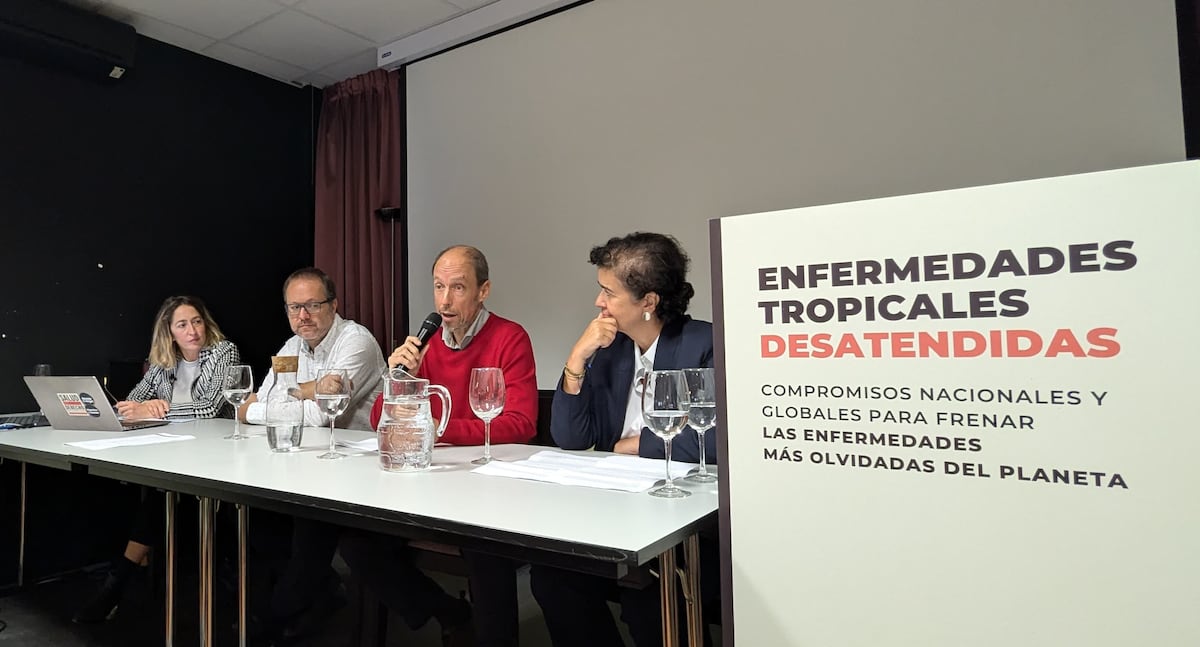More than one billion people in the world suffer from one of the 21 tropical diseases that the World Health Organization (WHO) considers neglected. And yet, the funds and resources allocated to prevent and treat them are negligible compared to other ailments. “The poorest are the ones who suffer the most and when they get sick they are even poorer,” argued this Wednesday Dr. Jarbas Barbosa da Silva, director of the Pan American Health Organization (PAHO), during an event in Madrid in which experts in health from the Anesvad Foundation, Salud por Derecho, Doctors Without Borders (MSF) and DNDi (acronym in English for Drugs for Neglected Diseases Initiative) demanded more means to end these conditions. “They cause stigmatization, disability and, sometimes, lifelong pain,” added Antonio Leis, director of the Spanish Agency for International Cooperation (AECID).
The roadmap approved by the World Health Organization (WHO) in 2021 foresees that in 2030 “100 countries will eliminate at least one of these diseases, reducing the disability they cause by 75% and reducing the number of disabilities by 90%. of people who need medical attention for this reason,” explained Vanessa López, director of the Salud Por Derecho Foundation. However, although the last WHO report, from 2023, indicated progress such as the elimination of one of the neglected tropical diseases (NTDs) in 50 countries, the 2030 goal is very far away, as all experts agree.
“It is a tremendously ambitious, idealistic roadmap and honestly in the remaining five years we are not going to achieve the vast majority of these objectives,” criticized José Antonio Ruiz Postigo, doctor with the WHO Global NTD Control Programme. that pointed out the chiaroscuros of the sector. “We could use as the first excuse the [pandemia] of covid, which for two or three years paralyzed all health interventions that had nothing to do with covid,” he stressed. But the problem is much larger: “No WHO Member State financially supports the department of neglected tropical diseases.”
We believe that if we had better and more neutral financing from the Member States [de la OMS] we could carry out some actions that we cannot carry out now
José Antonio Ruiz Postigo, doctor of the WHO Global NTD Control Program
As an example, Ruiz Postigo revealed that his division has “lost 22 technical or medical jobs, either due to retirement or resignation,” without them having been replaced, to demonstrate the lack of global attention that NTDs receive. “For us, it would be important not to depend on pharmaceutical companies” or other philanthropies, he added. And he then opted for public funds: “We believe that if we had better and more neutral financing from the Member States [de la OMS] “We could carry out some actions that we cannot carry out now.”
Among the many challenges to comprehensively addressing neglected tropical diseases, Francisco Bartolomé, MSF expert on these ailments, pointed out the “problem of supplies.” “Drugs to treat NTDs are not profitable, which forces us to live in uncertainty, since it may happen that they stop producing them or that they do not produce them if a minimum quantity is not requested from the company that supplies them,” he criticized. . As an example, Bartholomew talked about snake bites. “The serum that we provide in the most serious cases has stopped being produced in South Africa,” explained the doctor, who told how he was forced to distribute the reserves they had at MSF with a dropper in the places of greatest danger until they found an alternative. .
Poverty and other social determinants
“To combat neglected tropical diseases, we must understand what is behind them so that they overwhelmingly affect the countries of sub-Saharan Africa,” explained Iñigo Lasa, general director of the Anesvad Foundation, an organization focused on the ailments that are visible in the skin because they are “the ones that stigmatize the most.” The diagnosis, shared by all experts, is that social determinants, such as poverty, lack of access to clean water or gender inequalities, define who are the people who most frequently suffer from these ailments.
“How are you going to clean and heal a wound if you don’t have water?” Lasa asked herself. And he stressed the issue of lack of means: “It is difficult for a person with few economic resources to buy medicines or travel to a health center,” added the director of Anesvad, which together with other organizations is promoting the approval of a resolution in the next WHO world summit that places skin conditions as a global health priority. “If approved, it would not be binding for the States to provide more funds, but it would be binding for the WHO to do so,” he said.
And although “the funds allocated to these diseases are disproportionately low based on” what they require, “they have a high return,” said Isabela Ribeiro, director of the DNDi viral diseases group. “A one dollar investment [0,91 euros] causes a return of $465 [426 euos]”, he clarified.
